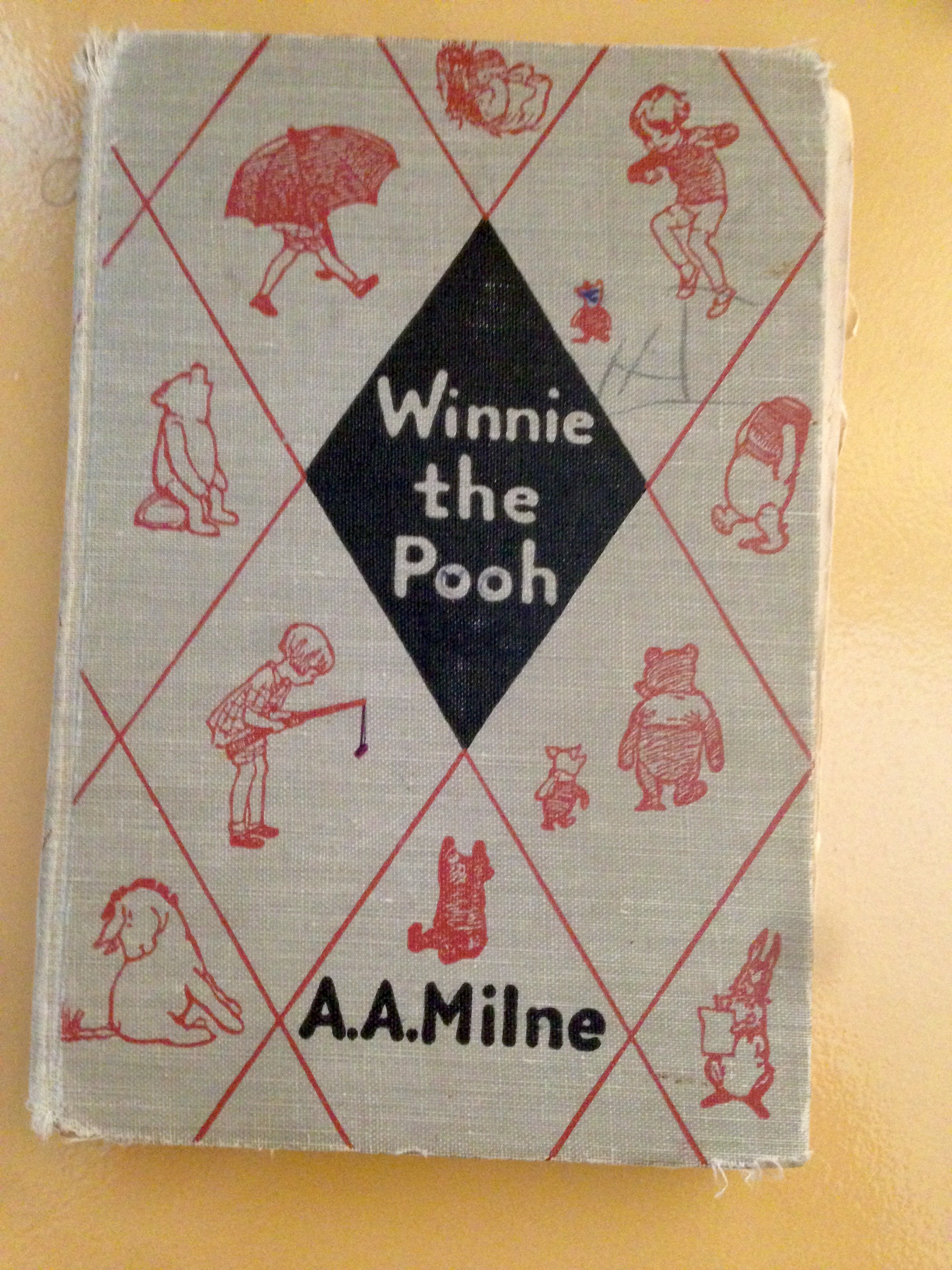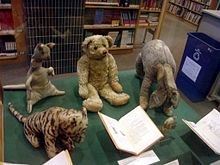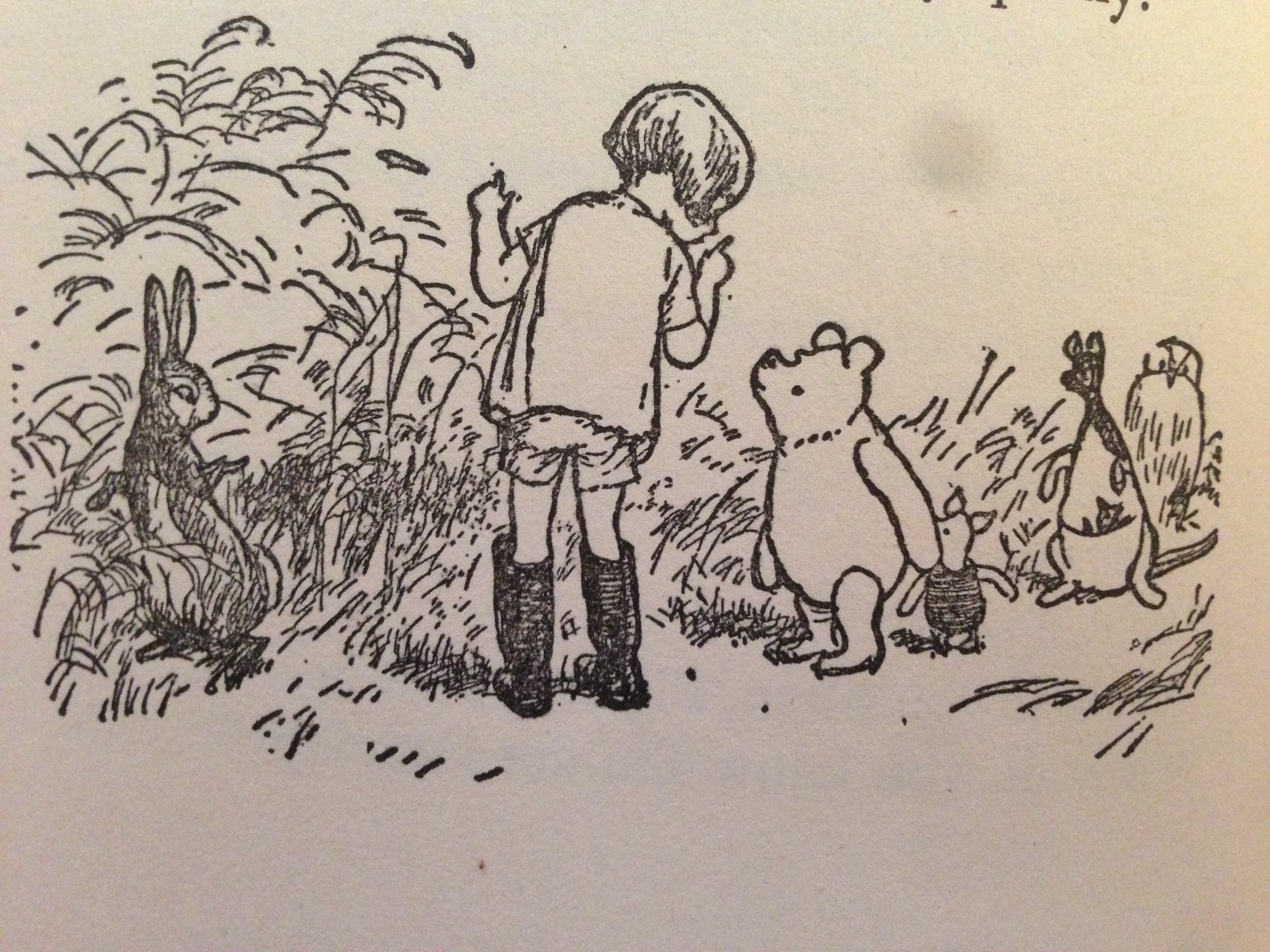
Newsletter
Yes! Send me my FREE short story collection and sign me up for those exclusive subscriber goodies!
We value your privacy, and will never spam you! View our privacy policy at lasmithwriter.com/privacy

Yes! Send me my FREE short story collection and sign me up for those exclusive subscriber goodies!
We value your privacy, and will never spam you! View our privacy policy at lasmithwriter.com/privacy
Winnie-The-Pooh, by the English author A. A. Milne, was published in 1926, and charmingly illustrated by E.H. Shepard. It was Shephard’s illustrations in last month’s Wind in the Willows that helped me decide to read Pooh next, as looking at Mole and Rat I was reminded of Christopher Robin and Pooh, and I happily settled into a lovely re-visit of my friends in the Hundred Acre Wood.

My well-loved copy, a 1950 edition, given to my older siblings in 1951 and discovered by me on the bookshelves sometime in the 1960s….
“Settled” is a good description. Reading this book is like wrapping yourself up in a big cushy blanket while you are sipping tea and sitting by the fire. This book is warm, comforting, gentle, and kind, and I very much enjoyed my time immersed in it once again.
Besides reading the books themselves, one of the things I have enjoyed the most about my series this year is the opportunity to find out more about the authors. In doing a bit of Google-searching on Alan Alexander Milne I found out the following fun facts:

A.A. Milne in 1922. Image from Wikipedia.
In 1925 Milne bought a country home a mile north of Ashdown forest, in East Sussex, and he and his wife Dorothy and their son Christopher spent many happy hours in this place, getting away from the city on weekends and during the summer. Ashdown Forest is the setting for the Hundred Acre Woods, many of Shepherd’s illustrations are actual views of the landscape, with slight alterations here and there.
Speaking of E. H. Shepherd, like John Tenniel’s work in Alice of Wonderland, these illustrations are a perfect marriage to the author’s words. Shepard was an illustrator at Punch magazine, and he was recommended to Milne by another Punch staffer. Initially Milne was dubious, but once Shepard illustrated Milne’s poetry book, When We Were Very Young, which was published in 1924 and Milne saw their quality, he insisted on Shepard illustrating the Pooh books as well.

Wow. These are Christopher Robin’s actual stuffed toys which E.H. Shepard used as the basis for his illustrations. Except, and importantly, for Pooh. The Pooh bear in the books was modelled after Shepard’s son’s teddy bear, named Growler. The bear pictured here was Christopher Robin’s though, the original Winnie The Pooh.These are on display in the Main Branch of the New York Public Library. Another place to add to my bucket list! Picture from Wikicommon
 There is a wonderful Canadian connection to the books. Christopher Robin’s teddy bear was named Winnie, after a real bear he saw at the London Zoo. This had been bought for $20 in Ontario and surreptitiously brought into England by Canadian Lieutenant Harry Colebourn while on route to serve in the First World War. He named her “Winnie” after his hometown of Winnipeg, Manitoba, and left her at the zoo while he served in France, eventually donating her to the zoo as her permanent home.
There is a wonderful Canadian connection to the books. Christopher Robin’s teddy bear was named Winnie, after a real bear he saw at the London Zoo. This had been bought for $20 in Ontario and surreptitiously brought into England by Canadian Lieutenant Harry Colebourn while on route to serve in the First World War. He named her “Winnie” after his hometown of Winnipeg, Manitoba, and left her at the zoo while he served in France, eventually donating her to the zoo as her permanent home.
Well, onto the book itself. Like Wind in the Willows, this is a series of small vignettes about Pooh and his friends and the little adventures they have in the Hundred Acre Wood. These are very little adventures, mind you, as is appropriate for young children.
The book begins by Christopher Robin coming down the stairs dragging Pooh by the leg behind him (bump-bump-bump) and asking for a story about Pooh. Thus follows the tales of the Silly Old Bear, as Christopher calls him, and his friends, namely Piglet, Owl, Rabbit, Eeyore, Kanga, and Roo.
Pooh himself, although described as a Bear of Little Brain, is humble, silly, kind and steadfast. He is inordinately fond of honey (hunny) and always wanting a snack. This gets him in to trouble as he ends up being stuck in Rabbit’s door after eating too much while on a visit, and eating all the honey out of the pot he was taking to Eeyore as a present. But nothing is too disastrous for too long in this book, the various adventures the friends have are resolved without too much scary stuff happening.
As I read the book I was struck by how clever Milne was as a children’s author. He gets the right balance here, I think. He doesn’t necessarily write down to children, he uses fairly big words at times (like “expedition”, which Pooh pronounces “expotition”) and allows his characters to be in some danger here and there (Pooh and Piglet hunt for Heffalumps and Woozles, there is a flood in which Piglet gets stranded, Roo falls into a river). There is just enough suspense to keep children interested but not so much that it is frightening. And when things get too hard or difficult for Pooh or the others they always call on Christopher Robin, who helps them sort things out. Every child sees themselves as Christopher Robin, and so it gives them a way to feel useful and smart and brave as they see Christopher in the book help the characters out.

The “Expotition” to the North Pole
I’m hard-pressed to say which character is my favourite. Probably Pooh, but I have a soft spot for Piglet as well, because in a lot of ways I can remember identifying with him the most as a child. As the youngest in the family, I often, like Piglet, felt uncertain, scared, and in over my head as I tagged along behind the rest.

Pooh and Piglet hunting Woozles
And then there is Eeyore. The original “Debby Downer”! You can’t help but feel sorry for him, though, when his tail is lost, or when his birthday is forgotten, and it’s so lovely to see the other characters rallying around him when these bad things happen. This comforting sense of friendship and community is an underlying theme of the book, and it is one of the reasons why it appeals so much to children and adults alike.
Unfortunately Tigger doesn’t come along until The House at Pooh Corner, and Pooh and Piglet don’t play Poohsticks until that book as well, so I missed revisiting those two special parts of Milne’s creations this month. Drat.
I closed Winnie-The-Pooh with reluctance, but I am very much eager to start next month’s book. I am going to read a book that was my very own, not one that was a hand-me-down, and it arrived in my life on Easter day in 1975.
It is Watership Down, by Richard Adams, and I can’t wait to read it again!